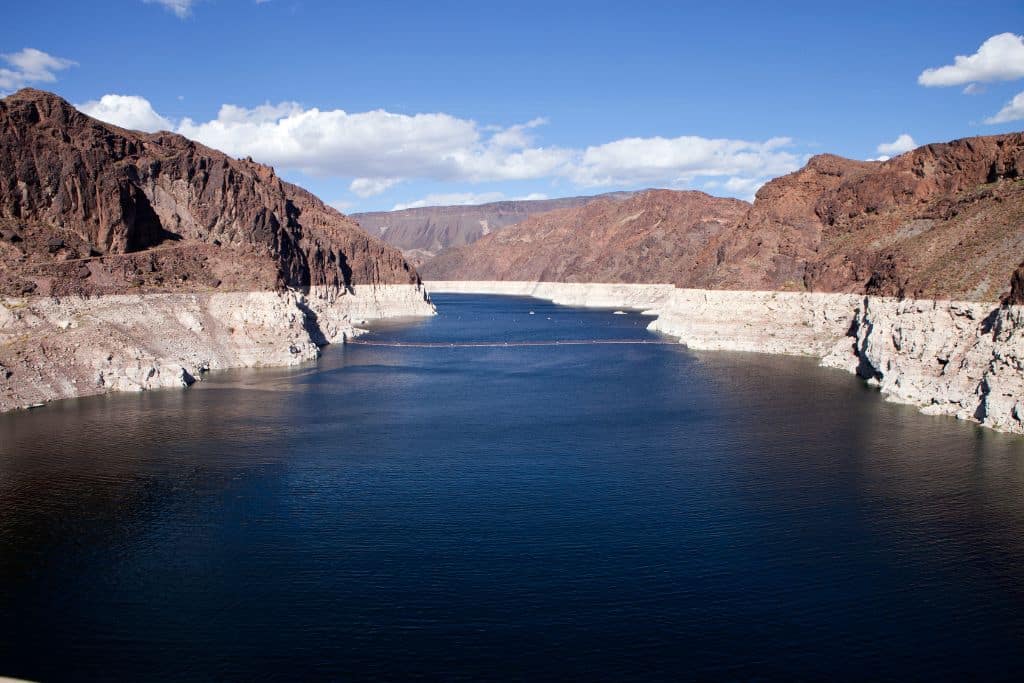According to experts, the Colorado river water shortage is so dire that it is unlikely Lake Powell and Lake Mead Reservoir will refill in our lifetimes.
—
Lake Powell and Lake Mead Reservoir, the nation’s largest water bodies, are very unlikely to refill in the coming decades amid the worsening of the Colorado river water crisis.
The decade-long Western megadrought, the worst in 1,200 years and caused by a combination of natural and anthropogenic activities, has taken a toll on water supplies in the region and is likely to turn Lake Powell and Lake Mead to “dead pool” levels, officials warned at the Colorado River Users Association last December.
This means that water levels could shrink so much that neither reservoir would be able to release water downstream, with consequences beyond water shortage. Indeed, were the lake’s level to drop below 895 feet (273 metres) from the current 1,047 feet (319 metres), it would also jeopardise the Hoover Dam’s ability to provide electricity – leaving nearly 1.3 million people in Arizona, California, and Nevada without power.
The Colorado River Basin is one of the primary sources of water supply in the American Southwest. Comprising parts of seven US and Mexican states and 29 federally recognised tribes, it currently delivers water to 40 million people and has supported the region’s economic growth since the early 1900s.
Lake Mead Reservoir, formed by the famed Hoover Dam along the Colorado River, is the largest reservoir by volume in the US and more than half of the population in the Colorado River Basin relies on it.
Speaking with The LA Times, water and climate scientist at Colorado State University Brad Udall warned that lakes Mead and Powell are unlikely to fill up again anytime soon.
“To think that these things would ever refill requires some kind of leap of faith that I, for one, don’t have,” he said.
Bill Hasencamp, manager of Colorado River resources for the Metropolitan Water District of Southern California, blamed the shortage on unsustainable water consumption habits. Indeed, while the reservoirs filled again in the past when demand for water was low, water use nowadays is “maxed out”, meaning that even a series of wet seasons wouldn’t be enough to refill the lakes.
“Every state is taking too much, and we have to cut back. And so there’s just not enough. You would need wet year after wet year, after wet year after wet year, after wet year. Even then, because the demand is so high, it still wouldn’t fill,” Hasencamp said in an interview.
Agriculture is one of the greatest demands placed on the entire Colorado River System – consuming nearly 80% of the basin’s water. Water policy efforts must acknowledge the connection between agriculture and water use in the West to ensure proper management. In December, federal officials called on states to collaborate to cut their water consumption by 15% to 30%.
You might also like: Causes And Effects of Lake Mead and Colorado River Basin Water Shortage


















